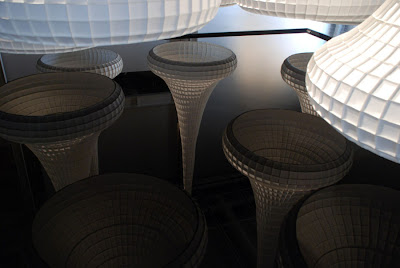
 Simparch situated an iconic head, on the grounds of the Kielder forest, located near the Scottish border. Large enough to enter into with stairs to a 2nd floor, this large anthropomorphic offering was inspired by the Celtic gods of Britain whom are frequently anonymous and depicted merely by the head alone.
Simparch situated an iconic head, on the grounds of the Kielder forest, located near the Scottish border. Large enough to enter into with stairs to a 2nd floor, this large anthropomorphic offering was inspired by the Celtic gods of Britain whom are frequently anonymous and depicted merely by the head alone.In the relatively new and cultivated monoculture of Kielder's "working" forest, a giant head sits knowingly watching and listening to the nuances of daily forest life - the creatures, the wind, and the roar of harvesting equipment.
>> Simparch website
This is situated near my home in Scotland. I haven't had a chance to visit it yet but will go next time I am at home & will observe how sound functions in this sculpture. I like the idea of the enlarged ear trumpets inside the head (as suggested in the illustration) where you could sit and experience the sound scape of the forest from a different perspective.
I want to do some kind of sound intervention...







